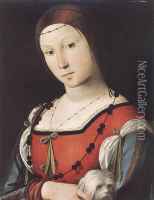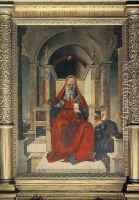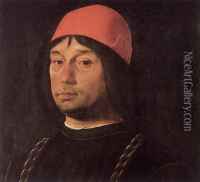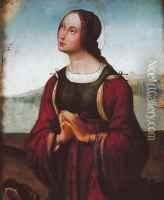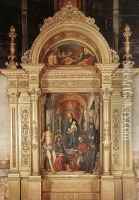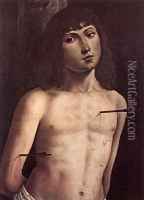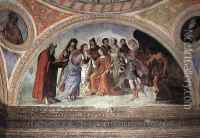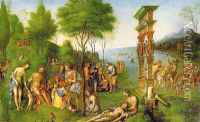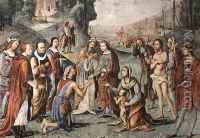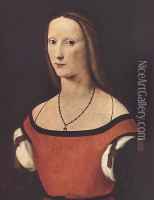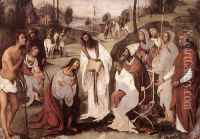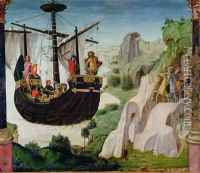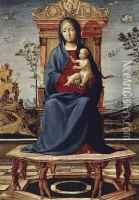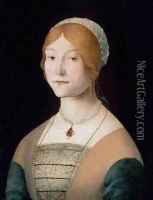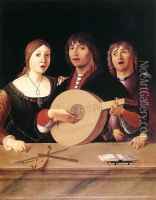Lorenzo Costa Paintings
Lorenzo Costa was an Italian painter of the Renaissance period, known for his contribution to the School of Ferrara and later the School of Bologna. Born in 1460 in Ferrara, Italy, Costa was influenced by the Ferrarese school of painting, which was itself greatly influenced by the artistic styles and innovations occurring in nearby Padua and Venice.
Costa's early works demonstrate the impact of Ferrarese masters such as Cosimo Tura and Ercole de' Roberti, as well as the Venetian colorism that was being popularized by artists like Giovanni Bellini. In his formative years, he likely apprenticed under Francesco del Cossa or Tura, which helped him develop a style characterized by strong color and clear, firm outlines.
Around 1483, he moved to Bologna, where he became a central figure in the Bolognese School. There, he succeeded Francesco Francia as the dominant painter. His presence in Bologna is significant as he contributed to the spread of Renaissance styles into northern Italy. In Bologna, Costa's style continued to evolve, where he adopted more of the softness and grace characteristic of the Lombard and Umbrian schools.
Costa's work includes altarpieces, frescoes, and portraits, displaying his versatility in different mediums. His commissions were numerous, and he painted for many of the noble families of the time, including the Bentivoglio family in Bologna. Notable works include the 'Bentivoglio Altarpiece' and the frescoes in the Oratory of Santa Cecilia.
In his later years, Lorenzo Costa also worked in Mantua, where he was influenced by Andrea Mantegna. His last works show an incorporation of Mantegna's architectural perspectives and a continued refinement of his color palette.
Costa's legacy includes not only his contributions to the Italian Renaissance but also his influence on later artists. Among his pupils was the famous mannerist painter Dosso Dossi. Lorenzo Costa died in 1535 in Mantua, leaving behind a body of work that has been celebrated for its compositional elegance and chromatic richness.
